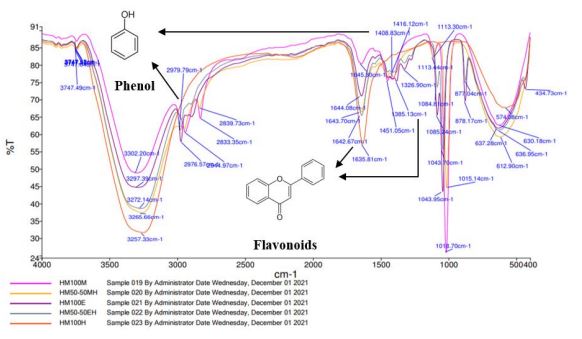Insights into the Pharmacognostic Elucidation of Harumanis Mango (Mangifera Indica Linn.) Leaves Extracts as Therapeutic Agent
DOI:
https://doi.org/10.37934/armne.17.1.2841Keywords:
Harumanis mango, pharmacognosy, herbal medicine, phytochemicals, quality controlAbstract
Mangifera indica L. (mango) of the Anacardiaceae family is a fruit with many phytochemicals that are extensively used in various traditional systems of medicine to prevent and treat various diseases. In Malaysia, harumanis is a local variety of mango widely cultivated in the northern region, namely Perlis. However, the drawback of this harumanis variety of mango is that research and information on its therapeutics are scarce and limited. Therefore, localized harumanis leaves were introduced to a series of pharmacognostic studies to provide critical details explaining harumanis as a potential therapeutic agent. Initially, the harumanis leaves were introduced to quality analysis tests, unveiling that the raw material used abided by proper post-harvesting protocols. Then, the harumanis leaves were extracted using ultrasonic aided extraction (UAE) with 100% methanol (13.73±0.24 %), 50% methanol (14.47±0.19 %), 100% ethanol (10.35±0.19 %), 50% ethanol (12.61±0.26 %), and distilled water (8.09±0.21 %). Next, the initial phytochemical screening revealed the presence of flavonoids, tannins, and saponins in all extracts. Subsequently, the phenolic and flavonoid content were quantified with the 50% methanol extracts recorded the highest total phenolic content (5.76 ± 0.02 mg/g), 50% ethanol extracts had the highest total flavonoid content (4.38 ± 0.04 mg/g). Fingerprinting analysis via FTIR spectroscopy was used to identify phytochemicals confirming the presence of flavonoids and phenolics compounds in all extracts. The extracts were then introduced to a DPPH inhibition assay with the highest IC50 value obtained from 50% methanol with 75.2 ± 0.22 microgram per milliliter. Next, the antimicrobial capabilities were tested using a disc diffusion study on E. coli, B. subtilis, and Face normal flora showing that the methanolic extract has superior abilities in microbial inhibitions with the value recorded at 13mm, 22mm, and 14mm respectively. Overall, we obtained valuable pharmacognostic data on the harumanis leaves extracts as potential antioxidant and antimicrobial agents.









